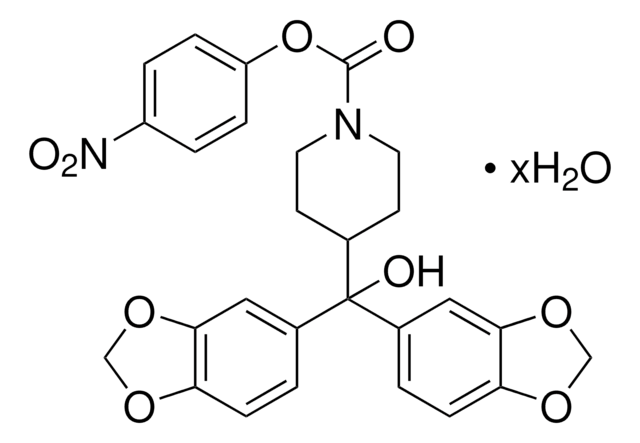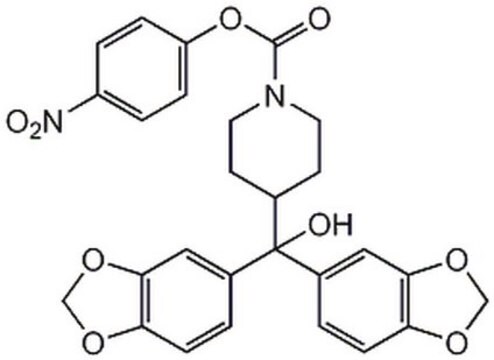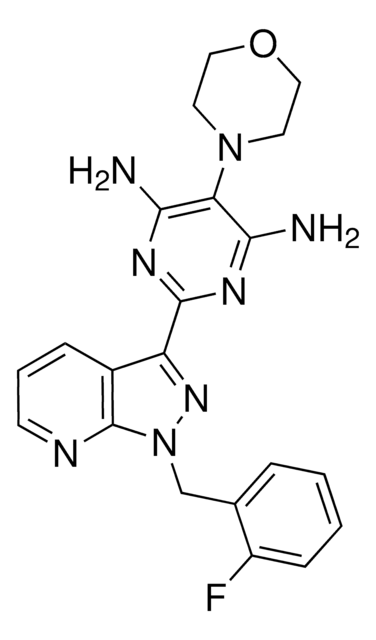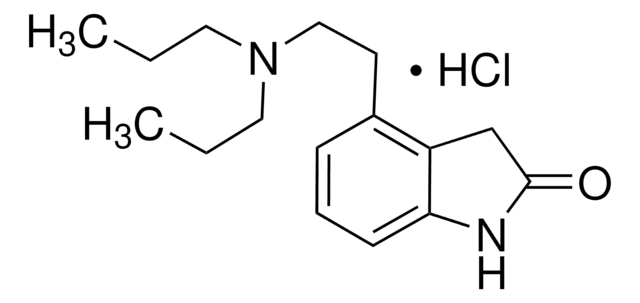SML2732
DO34
≥98% (HPLC)
Synonim(y):
(2-Benzyl-4-{[(2-methyl-2-propanyl)oxy]carbonyl}piperazinyl){4-[(4-trifluoromethoxy)phenyl]-1H-1,2,3-triazol-1-yl}methanone, 3-(Phenylmethyl)-4-[[4-[4-(trifluoromethoxy)phenyl]-1H-1,2,3-triazol-1-yl]carbonyl]-1-piperazinecarboxylic acid, 1,1-dimethylethyl ester
About This Item
Polecane produkty
Poziom jakości
Próba
≥98% (HPLC)
Postać
powder
kolor
white to beige
rozpuszczalność
DMSO: 2 mg/mL, clear
temp. przechowywania
−20°C
ciąg SMILES
O=C(N1CCN(CC1CC2=CC=CC=C2)C(OC(C)(C)C)=O)N3N=NC(C4=CC=C(C=C4)OC(F)(F)F)=C3
Działania biochem./fizjol.
Kod klasy składowania
11 - Combustible Solids
Klasa zagrożenia wodnego (WGK)
WGK 3
Temperatura zapłonu (°F)
Not applicable
Temperatura zapłonu (°C)
Not applicable
Certyfikaty analizy (CoA)
Poszukaj Certyfikaty analizy (CoA), wpisując numer partii/serii produktów. Numery serii i partii można znaleźć na etykiecie produktu po słowach „seria” lub „partia”.
Masz już ten produkt?
Dokumenty związane z niedawno zakupionymi produktami zostały zamieszczone w Bibliotece dokumentów.
Nasz zespół naukowców ma doświadczenie we wszystkich obszarach badań, w tym w naukach przyrodniczych, materiałoznawstwie, syntezie chemicznej, chromatografii, analityce i wielu innych dziedzinach.
Skontaktuj się z zespołem ds. pomocy technicznej








